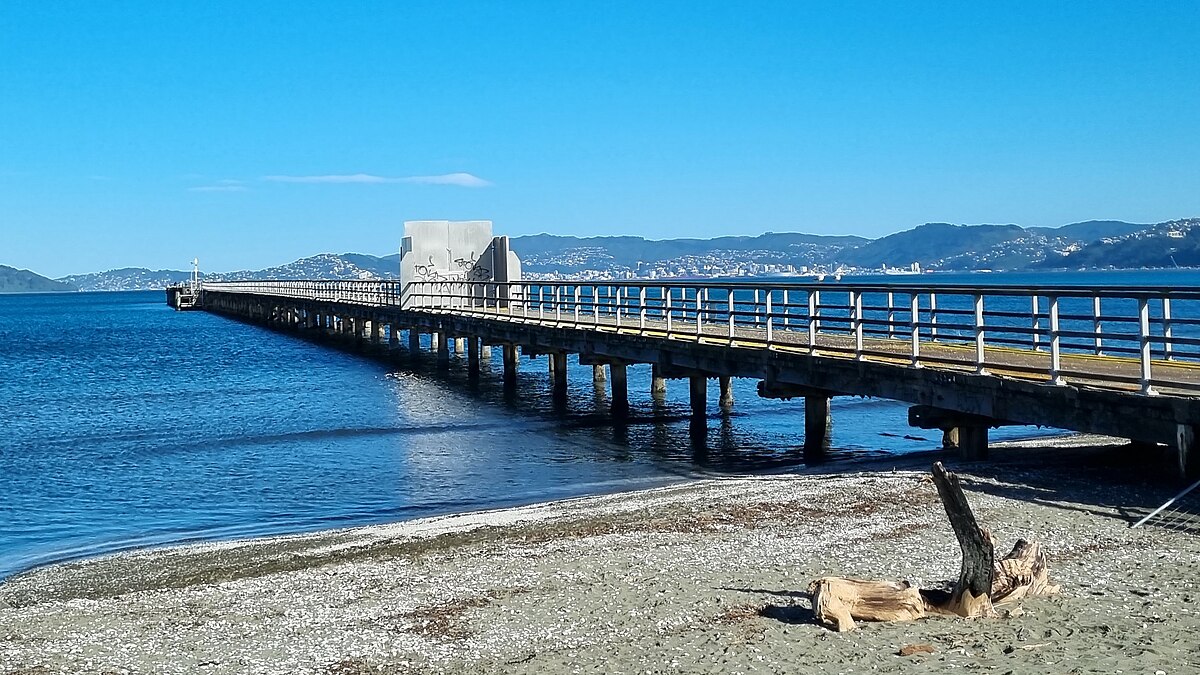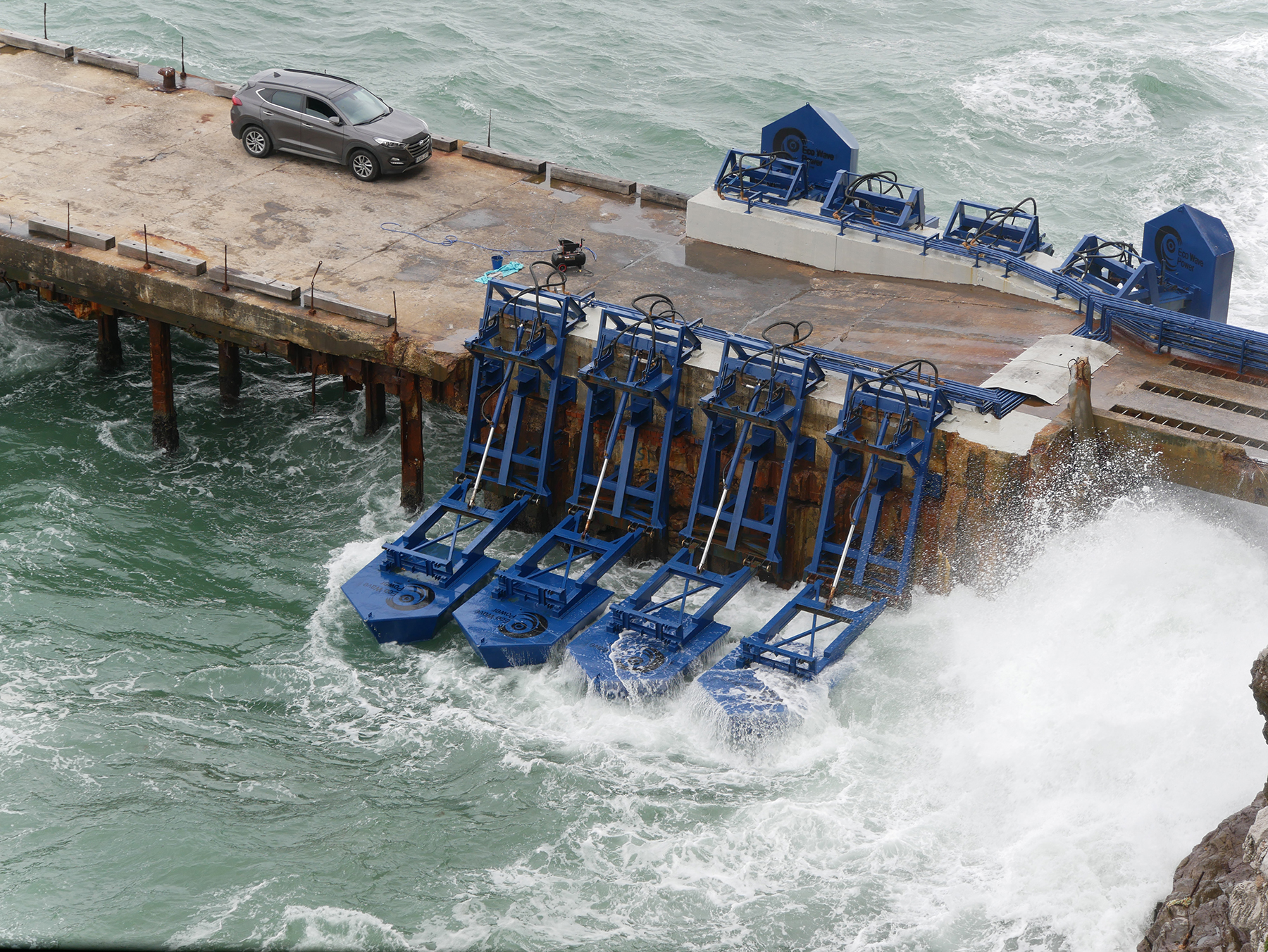 In a significant step towards sustainable energy, a new wave energy conversion system is being implemented at the Port of Los Angeles. This innovative technology, developed by Eco Wave Power, harnesses the constant power of ocean waves to generate electricity. The system’s potential for application in regions like Petone and Wellington in New Zealand is worth exploring.
In a significant step towards sustainable energy, a new wave energy conversion system is being implemented at the Port of Los Angeles. This innovative technology, developed by Eco Wave Power, harnesses the constant power of ocean waves to generate electricity. The system’s potential for application in regions like Petone and Wellington in New Zealand is worth exploring.
How It Works
The system employs a series of floaters that move up and down with the waves. This movement drives hydraulic pistons, which compress and decompress biodegradable hydraulic fluid. The fluid is transmitted to accumulators on land, where the built-up pressure rotates a hydraulic motor. This motor then drives a generator, and the electricity produced is fed into the grid via an inverter.

This technology is scalable; hundreds of commercial-scale floaters could power entire towns. The floaters also have a built-in resilience feature: they rise out of the water during storms and automatically resume energy conversion once the storm has passed. This ensures durability and continuous operation.
Ease of Integration
The design of the floaters allows them to be attached to existing man-made structures such as breakwaters or jetties. This simplifies installation, maintenance, and accessibility, making the technology practical and efficient. Eco Wave Power has already demonstrated the effectiveness and versatility of this technology through various projects around the world, including in Israel, Gibraltar, and Portugal.
In Portugal, a 20-megawatt project across four locations is planned, with the first 1-megawatt station set to commence operations soon. This project highlights the scalability and potential of wave energy in contributing to the global clean energy transition.
Potential for Petone and Wellington
Petone and Wellington, located on New Zealand’s southern coast, have significant potential for wave energy projects. The regions’ coastal geography and existing infrastructure, such as breakwaters and jetties, make them suitable for the implementation of wave energy technology. The reliable wave activity in these areas could provide a consistent source of renewable energy.

A Global Perspective on Wave Energy
Eco Wave Power’s technology represents a broader trend towards harnessing wave energy as a viable and sustainable energy source. According to the U.S. Energy Information Administration, ocean-wave energy could have supplied about 64% of the country’s utility-scale generated electricity in 2021 if it had been captured effectively. This statistic underscores the immense potential of wave energy on a global scale.
“You can think of waves as concentrated solar and wind power,” says Michael Lawson, Ph.D., group research manager of the National Renewable Energy Laboratory water power research and development group. “The sun creates wind, and wind creates waves. So low-density wind and solar energy that are distributed over large areas become concentrated into ocean waves.”
Challenges and Innovations
The wave energy industry has faced challenges, including seawater corrosion and damage from open-sea storms. High-profile wave-energy projects, such as Pelamis and Oceanlinx, have experienced setbacks due to these issues. However, the industry has learned from these experiences and is now focusing on design optimization and proving technologies at smaller scales.
Eco Wave Power’s approach of using shore-based solutions installed on existing structures helps mitigate some of these challenges. By avoiding the need for long and expensive underwater transmission cables and reducing the risk of damage from large offshore waves, the technology becomes more viable and cost-effective.
Integration with Other Renewable Sources
Wave energy complements other renewable energy sources, such as wind and solar. Waves are less intermittent and often more predictable, providing a stable energy source that can help stabilize the overall renewable energy supply. Additionally, waves peak from fall through early spring, when solar energy is at its weakest, creating a balanced energy generation profile.
With about 60% of the world’s population living within 200 km of a coast, wave energy also reduces the costs of delivering power generated on coasts. This makes it a practical solution for coastal regions like Petone and Wellington.
Looking Ahead
Following the pilot project in Los Angeles, Eco Wave Power plans to pursue commercial-scale power stations in the U.S. and other regions. For Petone and Wellington, adopting this technology could offer a sustainable and reliable energy source, contributing to New Zealand’s clean energy goals.
Conclusion
Wave energy technology, as demonstrated by Eco Wave Power, holds significant promise for regions like Petone and Wellington. The scalability, resilience, and ease of integration of this technology make it a viable option for harnessing the power of the ocean to generate electricity. As the world moves towards a sustainable energy future, wave energy could play a crucial role in meeting global energy needs while reducing carbon emissions and promoting environmental sustainability.
By exploring and implementing wave energy projects, Petone and Wellington could lead the way in adopting innovative and sustainable energy solutions, ensuring a cleaner and greener future for their communities.
TRUTH SEEKER
Instantly run a Quiz with friends... about the article. Interact more & analise the story. Dig in, catch out biased opinions, and "fact check" with TRUTH SEEKER by ONENETWORK WELLINGTONLIVE 👋
Do you agree with the main argument of this article?
Total votes: 0
What is the innovative technology being implemented at the Port of Los Angeles?
Bias Analysis
Fact Check Summary
This claim is not accurate. Wave energy is still in the early stages of development and has not yet reached such a high level of contribution.
Source: U.S. Energy Information Administration
This claim is false. The article mentions challenges faced by the wave energy industry, including seawater corrosion and storm damage.
Source: Article content







